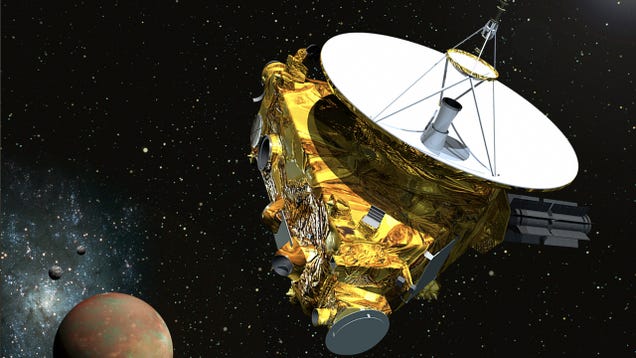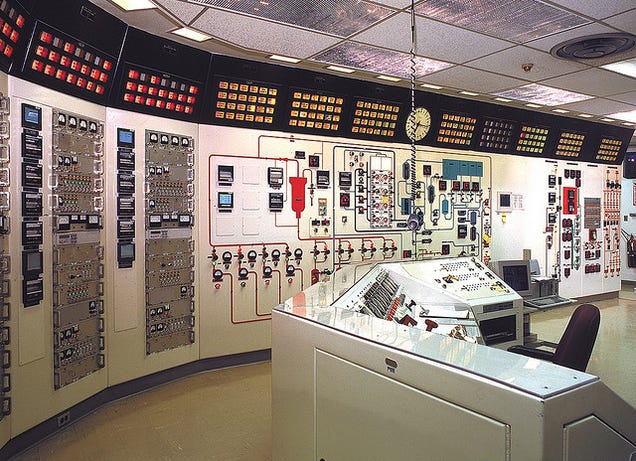
Rosetta's lander lasted just 60 hours on a comet after it bounced into the dark shadows of a cliff, where its solar panels couldn't power the vehicle. Why didn't it carry a more reliable power source, say a nuclear battery like one that's unfailingly fueled Voyager for decades? It's a simple question with a fascinating answer, one that begins with the Cold War and ends with the future space exploration.
When it comes to space travel, plutonium-238 is the perfect fuel: long-lasting and, as I'll explain later, relatively safe. Without it, we have no hope of going much further than Mars, after which it simply becomes too dark to rely on solar panels, the most common alternative power source in space. But the world is rapidly running out of plutonium-238. Because we've stopped making nuclear weapons.
Cold War origins
Plutonium-238, you see, is a byproduct of producing plutonium-239, better known as the main ingredient in nuclear weapons. During the Cold War that birthed the space race, this was a rather convenient fact. The Savannah River Site in South Carolina that made plutonium-239 for bombs also turned out plutonium-238 for satellites and space probes. After Savannah River shut down in the 1980s (only to linger as an environmental disaster), NASA began buying plutonium-238 from Russia.
NASA has sent since pellets of plutonium-238 on the two Voyager spacecraft, the Curiosity rover on Mars, and several other space probes exploring the dark outer reaches of our solar system.
Plutonium-238 also happens to be the perfect fuel for spacecraft. Although highly radioactive, the kind of radiation it emits does not easily penetrate through other material, making it safe. Wrapped in iridium metal, pellets of plutonium-238 glow red hot, giving off plenty of heat. As long as these pellets don't crack, radiation is not a concern. The pellets are placed in radioisotope thermoelectric generators (RTG), which turn the heat into electricity. It can last years, even decades in the case of Voyager now exploring interstellar space.

A pellet of plutonium-238 that was made for the RTG of either the Cassini mission to Saturn or the Galileo mission to Jupiter. Credit: DOE
Back on Earth, however, our plutonium-238 supply is running out. According to a recent article in Nature, NASA has only 35 kilograms, or about 77 pounds of plutonium-238 left—left in its aging stockpile, less than half of which is up to grade to use as fuel. The next Mars mission launching in 2020 will use up 11 pound of it. Russia is no longer selling plutonium-238, possibly because they too have run out or are running out.
The isotope doesn't occur naturally. No one else on Earth has plutonium-238.
Making plutonium-238 (again)

The control room for the High Flux Isotope Reactor used to make plutonium-238 at Oak Ridge. Yes, it's old. Credit: ORNL
But there is a plan now. In 2013, NASA began paying the Department of Energy $50 million a year to develop a program to make plutonium-238 again. With the facilities that once manufactured and handled the waste long shut down, it will not be easy. And it will be slow. Even if everything goes according to plan, the DOE will be making 1.1 kilograms, about 2.4 pounds, of plutonium-238 by 2021.
The production plan, for now, involves hopping between no fewer than three DOE labs all over the country.
- Idaho National Laboratory: The precursor material, neptunium-237, is extracted from nuclear reactor fuel.
- Oak Ridge in Tennessee: A reactor irradiates neptunium-237 to make plutonium-238. The plutonium-238 and any remaining neptunium-237 are extracted to be used as fuel and recycled, respectively.
- Los Alamos in New Mexico: Plutonium-238 is pressed into pellets and stored.
Two near cross-country trips later, we finally have plutonium-238 that is ready to use. (For more technical details about plutonium-238 production and a nifty map, head over to Nature.) There are also plans to turn Idaho into a second facility for irradiating neptunium-237, though the exact procedure for how to do that are still being worked out.

A cross section (left) and photograph (right) of the High Flux Isotope Reactor used to make plutonium-238 at Oak Ridge National Laboratory. Credit: ORNL
In fact, much of the plan's latter half is still TBD. A DOE spokesperson confirms that Oak Ridge scientists are just now starting to test the chemical processes for extracting plutonium-238 and neptunium-237 after the irradiation procedure. And then there is the tedious but crucial work of scaling up the entire production process. It's expected to be fully underway seven years from now.
The uncertain future
With NASA's current stockpile and the DOE production plan, the U.S. has enough plutonium-238 to fund two missions a decade for the next couple of decades.That's certainly better than nothing, but it puts into perspective just what a limiting factor nuclear fuel for space exploration really is.
In light if all that, it makes sense why the Rosetta mission wasn't a good candidate for a RTG. Most practically, the European Space Agency would have to buy plutonium-238 from the U.S. or Russia, neither of whom are eager to part with the precious resource. And solar panels here were at least option, unlike, say, with NASA's upcoming New Horizons mission to Pluto, where it is too dark to rely on the sun for power.
The Cold War jumpstarted space exploration, and Cold War-era nuclear fuel still powers our modern spacecraft. Historical ties are not so easily severed, but out of the ugliness of the Cold War and the horrible environmental disaster that was nuclear fuel production, we at least got the opportunity to transcend the smallness of Earth and glimpse the vastness of space.
Top image: The New Horizons spacecraft, powered by plutonium-238, that will flyby Pluto. Credit: Johns Hopkins University Applied Physics Laboratory/Southwest Research Institute (JHUAPL/SwRI)
via Gizmodo http://gizmodo.com

